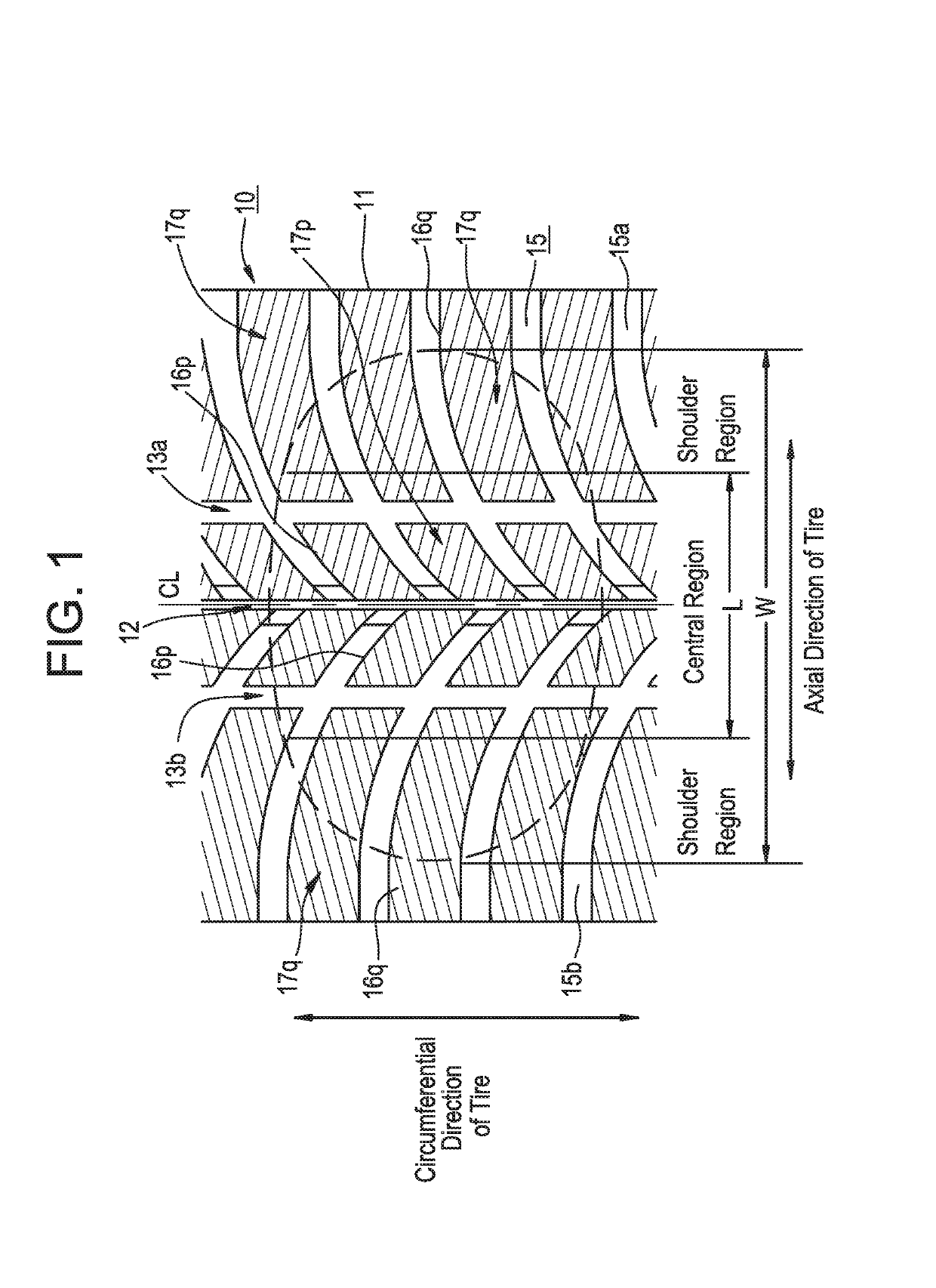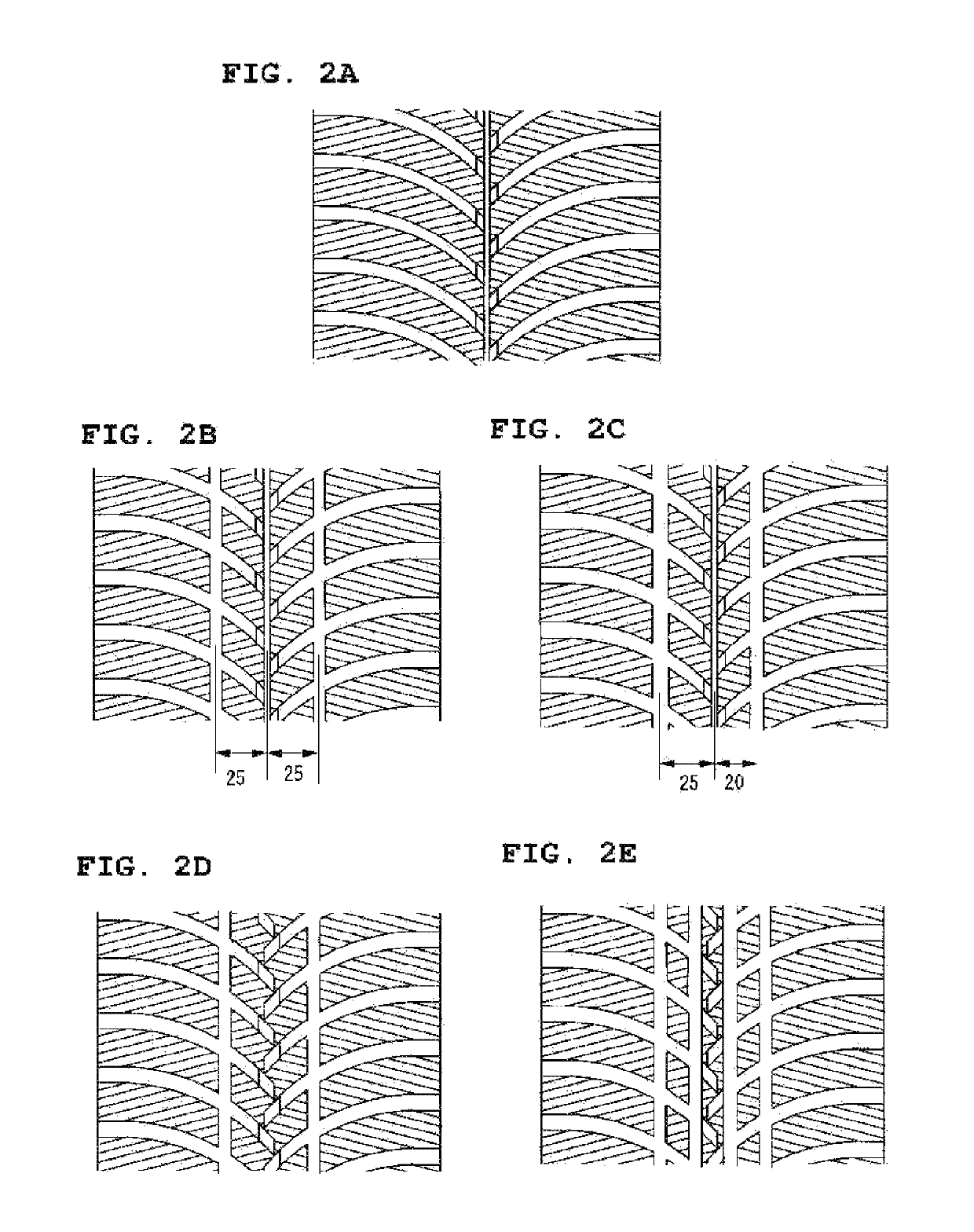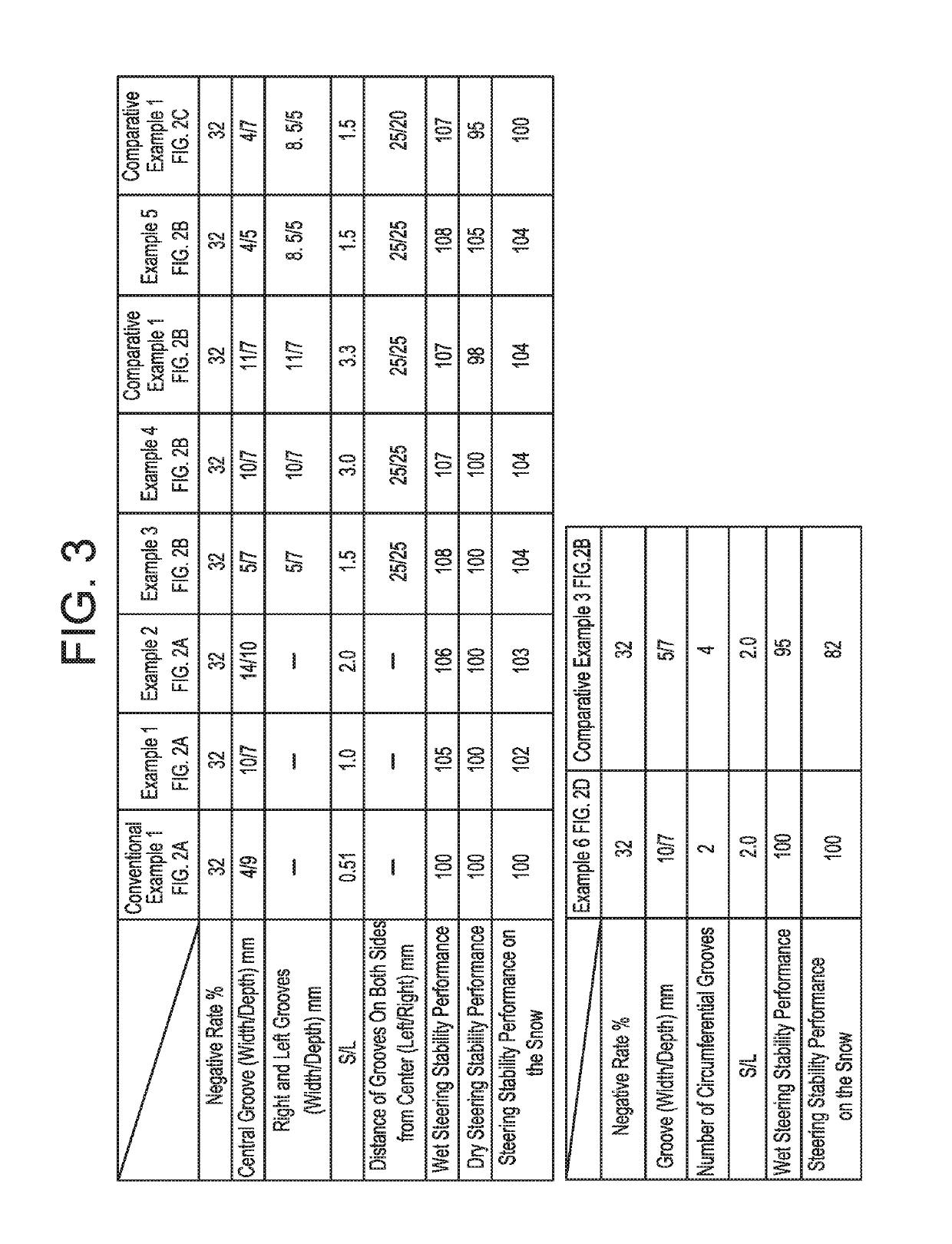Pneumatic tire having lug grooves forming a direction tread pattern
a technology of lug grooves and pneumatic tires, which is applied in the direction of inflatable tires, vehicle components, transportation and packaging, etc., can solve the problems of poor steering stability performance, wear resistance drop in steering stability performance on dry road surfaces, so as to improve steering stability performance, and increase the number of grooves
- Summary
- Abstract
- Description
- Claims
- Application Information
AI Technical Summary
Benefits of technology
Problems solved by technology
Method used
Image
Examples
first embodiment
[0032]FIG. 1 is an illustration showing an example of a tread pattern of a tread 11 of a pneumatic tire (hereinafter referred to as a tire) 10 according to a first embodiment of the present invention. The vertical direction of the illustration is the circumferential direction of the tire, and the horizontal direction the axial direction of the tire.
[0033]The tire 10 has at least one layer of carcass toroidally straddling between a pair of beads as the framework. At least one layer of a belt layer is disposed radially outside of the crown part of the carcass. And a tread pattern as shown in FIG. 1 is formed in a surface of tread rubber which is disposed radially outside of the belt layer.
[0034]Hereinafter, the region enclosed by two straight parallel lines each passing through the center between the straight line (CL: center line) passing through the contact width center and the contact edge of the contact patch of the tire indicated by a thick broken line in FIG. 1 will be referred ...
second embodiment
[0058]FIG. 1 is an illustration showing a pneumatic tire (hereinafter referred to as a tire) 10Z according to a second embodiment of the present invention. And the outline of the ground contact shape of the tire 10Z is delineated by a thick solid line in the figure.
[0059]The tread pattern of the tire 10Z is the same as that of the tire 10 shown in FIG. 1, with three circumferentially continuous circumferential grooves (circumferential grooves 12, 13a, 13b) formed in the central region and V-shaped lug grooves 15.
[0060]Hereinafter, of the blocks 16, the blocks 16p defined by the circumferential groove 12 located in the center, the circumferential groove 13a (or circumferential groove 13b), and the lug grooves 15 will be referred to as the inner blocks, and the blocks 16q defined by the circumferential groove 13a (or circumferential groove 13b) located outside and the lug grooves 15 will be referred to as the outer blocks.
[0061]The tire 10Z of this embodiment has a ground contact shap...
third embodiment
[0081]FIG. 8 is an illustration showing an example of a tread pattern of a tread 11 of a pneumatic tire (hereinafter referred to as a tire) 10A according to this embodiment of the present invention.
[0082]Formed in the surface of the tread 11 are a central circumferential groove 12, intermediate circumferential grooves 13a, 13b, shoulder grooves 14a, 14b, and lug grooves 15. The central circumferential groove 12 and the intermediate circumferential grooves 13a, 13b are circumferential grooves disposed in the central region and extending continuously along the circumference of the tire. In the present embodiment, the groove width of the intermediate circumferential grooves 13a, 13b is set wider than the width of the central circumferential groove 12.
[0083]The shoulder grooves 14a, 14b are circumferential grooves provided axially outside of the intermediate circumferential grooves 13a and 13b respectively and extending discontinuously in their approximately circumferential directions. ...
PUM
 Login to View More
Login to View More Abstract
Description
Claims
Application Information
 Login to View More
Login to View More - R&D
- Intellectual Property
- Life Sciences
- Materials
- Tech Scout
- Unparalleled Data Quality
- Higher Quality Content
- 60% Fewer Hallucinations
Browse by: Latest US Patents, China's latest patents, Technical Efficacy Thesaurus, Application Domain, Technology Topic, Popular Technical Reports.
© 2025 PatSnap. All rights reserved.Legal|Privacy policy|Modern Slavery Act Transparency Statement|Sitemap|About US| Contact US: help@patsnap.com



